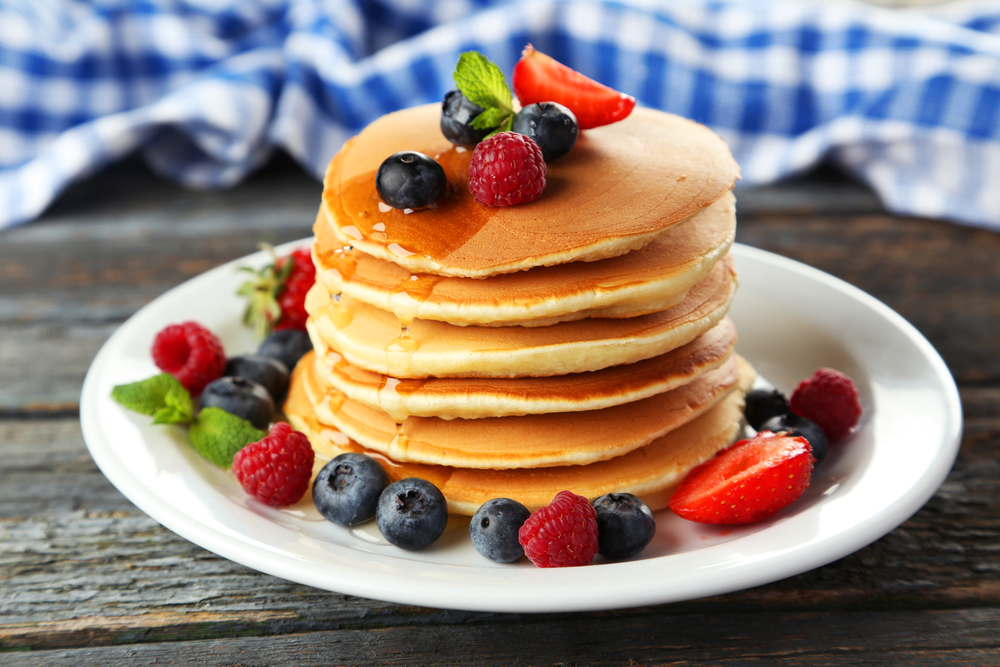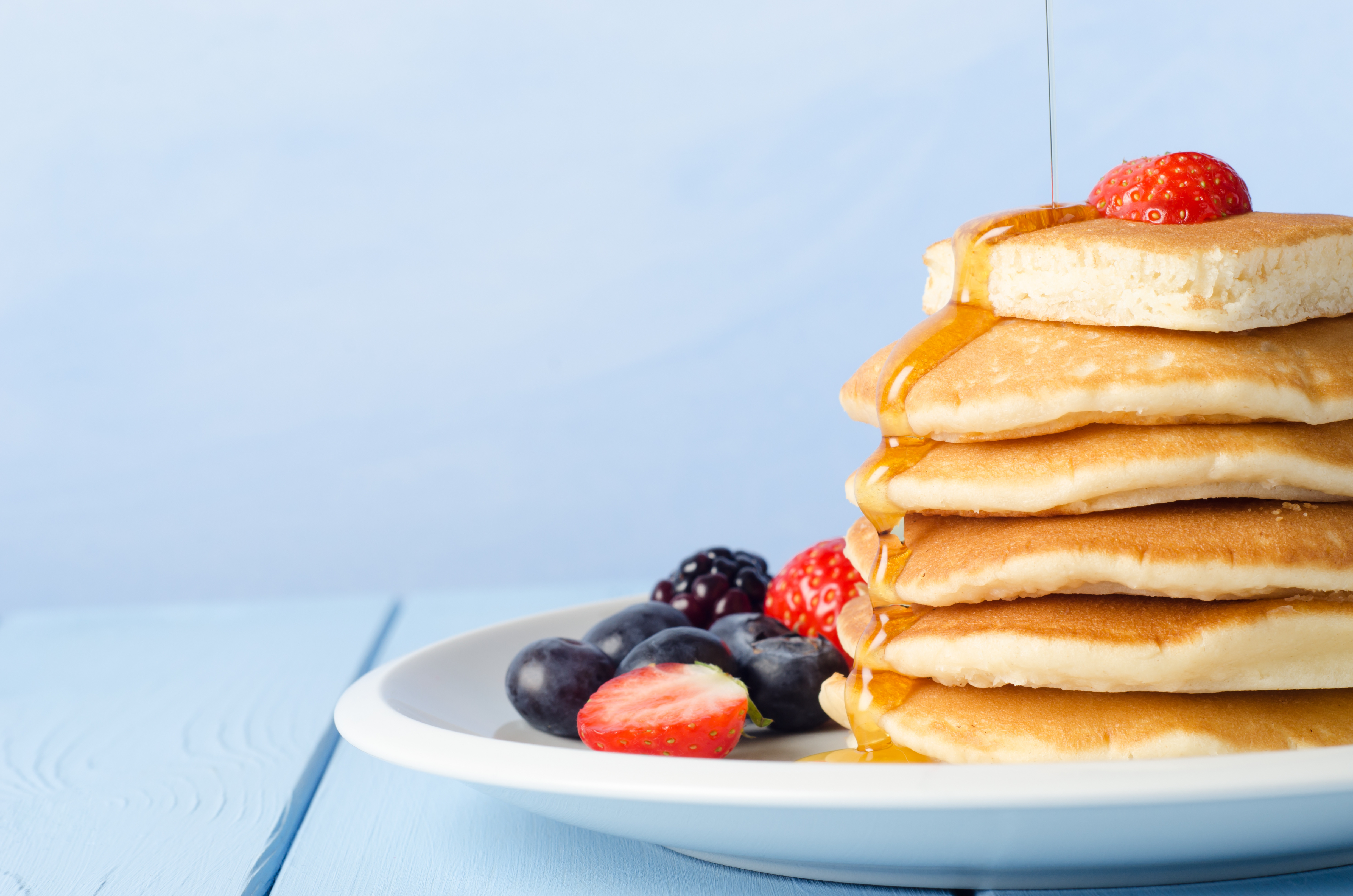
Mistakes Everyone Makes With Pancakes
Table of Contents
- 1. Using Cold Ingredients
- 2. Overmixing the Batter
- 3. Not Letting the Batter Rest
- 4. Using the Wrong Pan
- 5. Incorrect Pan Temperature
- 6. Using Too Much or Too Little Batter
- 7. Flipping Too Early or Too Late
- 8. Pressing Down on Pancakes
- 9. Not Using Fresh Leavening Agents
- 10. Skipping the Fat
- 11. Not Greasing the Pan Between Batches
- 12. Using the Wrong Flour
- 13. Ignoring the Importance of Sugar
- 14. Not Considering Add-Ins Carefully
- 15. Serving Pancakes Cold
- Conclusion
Mistakes Everyone Makes With Pancakes
- azeem memon
- 30-05-2024
- 30-05-2024
- 549225 views
- Information

Pancakes are a beloved breakfast staple enjoyed by people of all ages. Despite their simplicity, many home cooks make common mistakes that prevent their pancakes from achieving the perfect fluffiness, texture, and flavor. Whether you’re an experienced cook or a beginner in the kitchen, avoiding these mistakes can help you elevate your pancake game. In this blog, we’ll cover the most common pancake mistakes and provide tips on how to avoid them, ensuring you make perfect pancakes every time.
1. Using Cold Ingredients
One of the biggest mistakes people make when preparing pancake batter is using cold ingredients straight from the refrigerator. Cold milk, eggs, and butter can prevent your batter from mixing smoothly and result in uneven cooking.
Solution: Allow your ingredients to come to room temperature before mixing your batter. This simple step helps the ingredients blend more easily and creates a smoother, more consistent batter.
2. Overmixing the Batter
Overmixing pancake batter is a common mistake that can lead to tough, dense pancakes. When you overmix, you activate the gluten in the flour, which can result in a chewy texture rather than a light and fluffy one.
Solution: Mix your batter just until the ingredients are combined. It’s okay if there are a few lumps; they will work themselves out during cooking. Use a gentle hand and mix with a whisk or a fork to avoid overworking the batter.
3. Not Letting the Batter Rest
Skipping the resting time for your batter is another mistake that can affect the texture of your pancakes. Allowing the batter to rest gives the flour time to hydrate and the leavening agents time to start working, resulting in lighter and fluffier pancakes.
Solution: Let your batter rest for at least 10-15 minutes before cooking. This rest period allows the gluten to relax and the baking powder or baking soda to activate, leading to better pancakes.
4. Using the Wrong Pan
The type of pan you use can significantly impact the outcome of your pancakes. Nonstick pans are generally the best choice because they allow for even cooking and easy flipping.
Solution: Use a nonstick skillet or griddle for cooking your pancakes. If you don’t have a nonstick pan, make sure to grease your pan well with butter or oil to prevent sticking.
5. Incorrect Pan Temperature
Cooking pancakes at the wrong temperature is a common mistake that can result in burnt outsides and raw insides, or pale, undercooked pancakes. Finding the right heat is crucial for achieving evenly cooked, golden-brown pancakes.
Solution: Preheat your pan over medium heat. You can test the temperature by sprinkling a few drops of water onto the pan; if they sizzle and evaporate quickly, the pan is ready. Adjust the heat as needed to ensure the pancakes cook evenly.
6. Using Too Much or Too Little Batter
Using the wrong amount of batter can lead to unevenly cooked pancakes. Too much batter can make it difficult to cook the pancake through without burning the outside, while too little batter can result in thin, flimsy pancakes.
Solution: Use a measuring cup or ladle to pour the batter onto the pan. For standard-sized pancakes, 1/4 cup of batter per pancake is a good amount. This ensures your pancakes are uniform in size and cook evenly.
7. Flipping Too Early or Too Late
Flipping pancakes at the wrong time is a common mistake that can cause them to fall apart or cook unevenly. Flipping too early can make the batter splatter, while flipping too late can result in burnt pancakes.
Solution: Wait until bubbles form on the surface of the pancake and the edges look set before flipping. This usually takes about 2-3 minutes. Use a thin, wide spatula to flip the pancake gently and cook for another 1-2 minutes on the other side.
8. Pressing Down on Pancakes
Pressing down on your pancakes with a spatula is a mistake that can make them dense and flat. This action forces out the air bubbles that help make pancakes light and fluffy.
Solution: Avoid pressing down on your pancakes while they cook. Allow them to cook undisturbed until it’s time to flip. This will help maintain their fluffiness.
9. Not Using Fresh Leavening Agents
Using old baking powder or baking soda can result in pancakes that don’t rise properly, leading to flat and dense pancakes. Leavening agents lose their potency over time, so it’s important to use fresh ingredients.
Solution: Check the expiration dates on your baking powder and baking soda before using them. If they are past their prime, replace them with fresh leavening agents to ensure your pancakes rise correctly.
10. Skipping the Fat
Fat is essential for making pancakes tender and flavorful. Skipping or skimping on the fat can lead to dry, unappealing pancakes.
Solution: Use the amount of fat called for in your recipe, whether it’s butter, oil, or another type of fat. Incorporating the right amount of fat into your batter will result in moist and delicious pancakes.
11. Not Greasing the Pan Between Batches
Not greasing the pan between batches of pancakes can cause the pancakes to stick and cook unevenly. Even nonstick pans can benefit from a light coating of grease.
Solution: Lightly grease the pan with butter or oil between each batch of pancakes. This ensures each pancake cooks evenly and doesn’t stick to the pan.
12. Using the Wrong Flour
The type of flour you use can affect the texture of your pancakes. All-purpose flour is generally the best choice for traditional pancakes, but using other flours without proper adjustments can lead to disappointing results.
Solution: Stick to all-purpose flour for classic pancakes, or use a recipe specifically designed for alternative flours like whole wheat, almond, or gluten-free flours. These recipes account for the different properties of these flours to ensure good results.
13. Ignoring the Importance of Sugar
Sugar in pancake batter not only adds sweetness but also helps with browning and flavor. Leaving out the sugar can result in pancakes that are pale and lacking in taste.
Solution: Add the recommended amount of sugar to your batter. Even a small amount can enhance the flavor and appearance of your pancakes.
14. Not Considering Add-Ins Carefully
While adding fruits, nuts, or chocolate chips to pancake batter can be delicious, doing so without consideration can affect the cooking process and final texture.
Solution: Add your mix-ins carefully and sparingly. For even distribution and better cooking, sprinkle add-ins like berries or chocolate chips onto the batter after you’ve poured it into the pan, rather than mixing them directly into the batter.
15. Serving Pancakes Cold
Pancakes are best enjoyed hot off the griddle. Serving them cold can make them tough and less enjoyable.
Solution: Serve pancakes immediately after cooking. If you need to keep them warm while cooking multiple batches, place them in a single layer on a baking sheet in a low oven (about 200°F) until ready to serve.

Conclusion
Making perfect pancakes is an art that involves attention to detail and a few key techniques. By avoiding these common mistakes, you can ensure your pancakes turn out light, fluffy, and delicious every time. Remember to use room temperature ingredients, mix the batter gently, let it rest, use the right pan and temperature, and pay attention to flipping at the right moment. With these tips, you’ll be well on your way to mastering the art of pancake making and delighting your family and friends with your culinary skills.






















